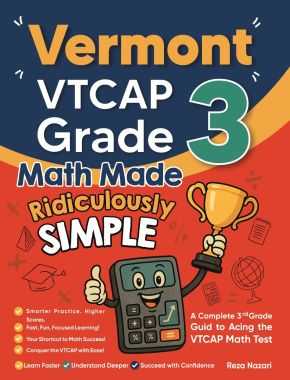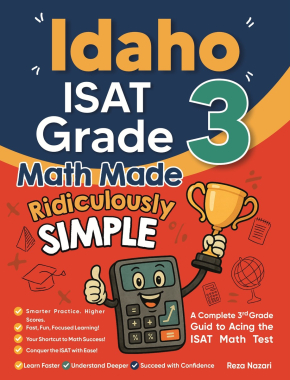Substitution Rule of Integrals: Integral Problems Made Simple
The Substitution Rule, often referred to as u-substitution, is a powerful technique in integral calculus that simplifies the integration process by transforming a complex integral into a simpler one. It is essentially the reverse process of the chain rule used in differentiation.
[include_netrun_products_block from-products="product/6-south-carolina-sc-ready-grade-3-math-practice-tests/" product-list-class="bundle-products float-left" product-item-class="float-left" product-item-image-container-class="p-0 float-left" product-item-image-container-size="col-2" product-item-image-container-custom-style="" product-item-container-size="" product-item-add-to-cart-class="btn-accent btn-purchase-ajax" product-item-button-custom-url="{url}/?ajax-add-to-cart={id}" product-item-button-custom-url-if-not-salable="{productUrl} product-item-container-class="" product-item-element-order="image,title,purchase,price" product-item-title-size="" product-item-title-wrapper-size="col-10" product-item-title-tag="h3" product-item-title-class="mt-0" product-item-title-wrapper-class="float-left pr-0" product-item-price-size="" product-item-purchase-size="" product-item-purchase-wrapper-size="" product-item-price-wrapper-class="pr-0 float-left" product-item-price-wrapper-size="col-10" product-item-read-more-text="" product-item-add-to-cart-text="" product-item-add-to-cart-custom-attribute="title='Purchase this book with single click'" product-item-thumbnail-size="290-380" show-details="false" show-excerpt="false" paginate="false" lazy-load="true"] [include_netrun_products_block from-products="product/6-south-carolina-sc-ready-grade-3-math-practice-tests/" product-list-class="bundle-products float-left" product-item-class="float-left" product-item-image-container-class="p-0 float-left" product-item-image-container-size="col-2" product-item-image-container-custom-style="" product-item-container-size="" product-item-add-to-cart-class="btn-accent btn-purchase-ajax" product-item-button-custom-url="{url}/?ajax-add-to-cart={id}" product-item-button-custom-url-if-not-salable="{productUrl} product-item-container-class="" product-item-element-order="image,title,purchase,price" product-item-title-size="" product-item-title-wrapper-size="col-10" product-item-title-tag="h3" product-item-title-class="mt-0" product-item-title-wrapper-class="float-left pr-0" product-item-price-size="" product-item-purchase-size="" product-item-purchase-wrapper-size="" product-item-price-wrapper-class="pr-0 float-left" product-item-price-wrapper-size="col-10" product-item-read-more-text="" product-item-add-to-cart-text="" product-item-add-to-cart-custom-attribute="title='Purchase this book with single click'" product-item-thumbnail-size="290-380" show-details="false" show-excerpt="false" paginate="false" lazy-load="true"]

The substitution rule is an essential technique in calculus, providing a method to tackle challenging integrals by transforming them into more manageable forms. Mastery of this technique is a valuable skill for solving various types of integral problems.
Definition of the Substitution Rule
- The basic idea is to replace a part of the integrand (the function to be integrated) and the differential with a new variable and its differential. This substitution makes the integral more straightforward to solve.
How It Works
- Choose a Substitution: Identify a part of the integrand, say \( g(x) \), and set a new variable \( u = g(x) \). This part should be chosen such that its derivative \( g'(x) \) also appears in the integrand.
- Compute Differential ( du ): Differentiate the substitution equation to find \( du \). That is, \( du = g'(x) dx \).
- Rewrite the Integral: Substitute \( u \) and \( du \) into the original integral, replacing all occurrences of \( x \) and \( dx \).
- Integrate: Perform the integration with respect to \( u \).
- Back-Substitute: Replace \( u \) with the original function \( g(x) \) to get the final result in terms of \( x \).
Example:
Suppose you have an integral like \(\int x \cos(x^2) dx\).
- Set \( u = x^2 \). Then, \( du = 2x dx \).
- Rearrange \( du \) to find \( x dx = \frac{1}{2} du \).
- Substitute into the integral to get \(\int \frac{1}{2} \cos(u) du\).
- Integrate to find \(\frac{1}{2} \sin(u) + C\).
- Back-substitute \( u \) to get \(\frac{1}{2} \sin(x^2) + C\).
Applications
- Complex Functions: Particularly useful for integrals involving complex functions where direct integration is not straightforward.
- Trigonometric Integrals: Simplifies integrals involving trigonometric functions.
- Exponential and Logarithmic Functions: Helps integrate functions involving exponentials and logarithms.
Advantages
- Simplifies the integration process.
- Can be used in a wide range of functions.
Limitations
- Finding the right substitution can sometimes be non-intuitive and requires practice.
- Not all integrals can be solved using u-substitution.
Related to This Article
More math articles
- 4th Grade MCAS Math Practice Test Questions
- The Ultimate 6th Grade IAR Math Course (+FREE Worksheets)
- Using Grid Models to Solve Percentage Problems
- Top 10 5th Grade Common Core Math Practice Questions
- The Ultimate Praxis Core Math Course (+FREE Worksheets & Tests)
- FREE 5th Grade MEAP Math Practice Test
- How to Solve an Absolute Value Inequality?
- Word Problems Involving Area of Quadrilaterals and Triangles
- Praxis Core Math Worksheets: FREE & Printable
- How to Prepare for the PSAT Math Test?


























What people say about "Substitution Rule of Integrals: Integral Problems Made Simple - Effortless Math: We Help Students Learn to LOVE Mathematics"?
No one replied yet.